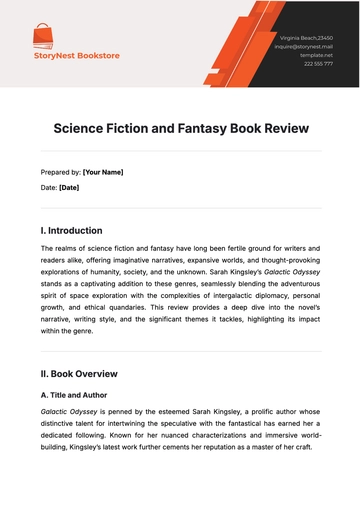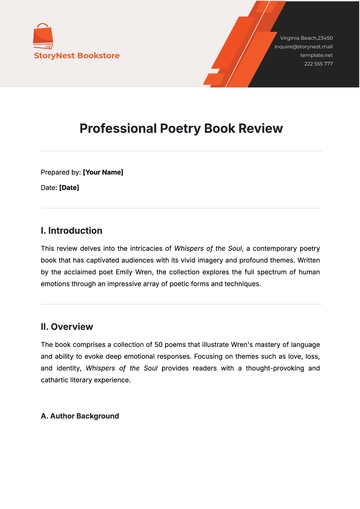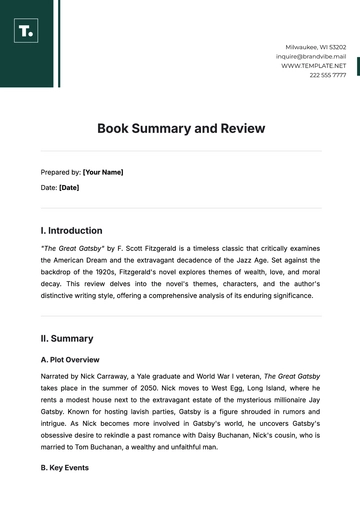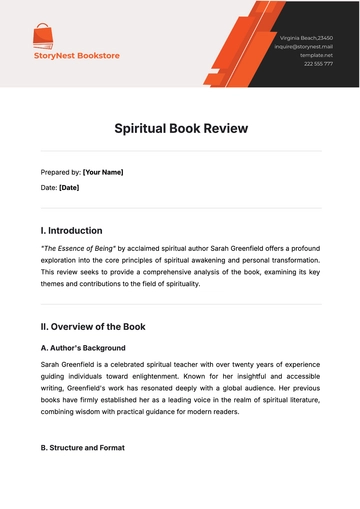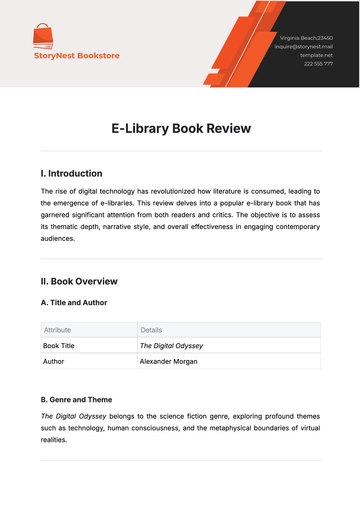Free Aesthetic Self-Help Book Review

Prepared by: [Your Name]
Date: [Date]
I. Introduction
Charles Duhigg’s The Power of Habit is an insightful exploration of the science of habits, providing readers with a deep understanding of how habits shape our personal and professional lives. In this review, I will offer a comprehensive analysis of the book’s structure, core ideas, and practical applications, highlighting its relevance to those seeking personal growth or looking to make an impact in organizations and societies.
II. Book Overview
The book is divided into three distinct sections, each focusing on a different aspect of habits. Duhigg uses scientific research, compelling narratives, and real-world examples to illustrate how habits are formed, maintained, and transformed.
A. Part One: The Habits of Individuals
In this opening section, Duhigg delves into the neurological mechanisms behind habit formation. Drawing from psychology and neuroscience, he introduces the concept of the habit loop, which consists of a cue, a routine, and a reward. Through captivating case studies, including those of Olympic athletes and individuals overcoming addiction, Duhigg illustrates how habits are not only automatic but can also be reshaped.
B. Part Two: The Habits of Successful Organizations
Duhigg shifts his focus to the world of business and organizations. He examines how companies such as Starbucks and Procter & Gamble have harnessed the power of habits to create efficient, high-performing teams. He explains how these organizations identify and cultivate habits that enhance productivity, innovation, and customer loyalty. This section highlights the potential of habits to drive success within any organization.
C. Part Three: The Habits of Societies
The final section expands on the broader impact of habits, exploring how societal change and collective behaviors are shaped by shared habits. Duhigg delves into social movements, like the civil rights movement, to show how habits influence large-scale transformations. By understanding and leveraging societal habits, leaders can bring about significant, lasting change on a grand scale.
III. Key Concepts
Duhigg introduces several groundbreaking concepts in The Power of Habit, which serve as the foundation of the book’s message.
Concept | Description |
|---|---|
Habit Loop | A neurological pattern consists of a cue, a routine, and a reward. |
Keystone Habits | Habits that, when changed, create a ripple effect, leading to broader positive changes. |
Role of Belief | Belief in the possibility of change is essential for breaking bad habits and forming new ones. |
The habit loop is at the core of Duhigg’s argument, explaining how habits work and how they can be reprogrammed. He also emphasizes the importance of keystone habits, which have the power to influence other behaviors and create widespread positive change. Finally, the role of belief plays a pivotal role in transforming habits, as individuals must believe in their ability to change before they can initiate lasting change.
IV. Practical Applications
One of the most valuable aspects of The Power of Habit is its focus on practical strategies for habit transformation. Duhigg provides a wealth of actionable advice for readers eager to apply these insights in their own lives or within their organizations.
A. Personal Development
Identify and alter negative habits: By recognizing the components of the habit loop, individuals can replace detrimental behaviors with more productive routines.
Adopt keystone habits: Focusing on habits that lead to broader changes, such as exercise or goal-setting, can trigger positive shifts in other areas of life.
B. Professional Growth
Cultivate positive work habits: By applying the principles of the habit loop and keystone habits, professionals can increase productivity, improve focus, and foster a culture of continuous improvement.
Organizational change: Duhigg offers tools for managers and leaders to analyze and reshape the habits within their organizations, leading to more effective teams and improved organizational culture.
V. Conclusion
The Power of Habit is a compelling blend of research, storytelling, and actionable advice. Duhigg successfully bridges the gap between science and everyday life, offering readers valuable insights into how habits shape our behaviors, businesses, and societies. Whether you are seeking personal transformation or looking to drive change within an organization, this book provides the tools to take control of your habits and create lasting improvements in your life.
Through its engaging narrative and practical advice, The Power of Habit serves as an invaluable guide to understanding the science of habits and unlocking the potential for meaningful change.
- 100% Customizable, free editor
- Access 1 Million+ Templates, photo’s & graphics
- Download or share as a template
- Click and replace photos, graphics, text, backgrounds
- Resize, crop, AI write & more
- Access advanced editor
The Aesthetic Self-Help Book Review Template from Template.net offers a sleek, user-friendly design that’s fully editable and customizable. Perfect for book lovers and bloggers, this template can be easily personalized to suit your style. Editable in our AI Editor Tool, it allows for quick adjustments to text, layout, and design—making your review truly unique.













